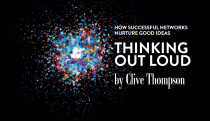Always be Crowdsourcing: Lessons Learned from Crowdfunding
|
Earlier this week, our team launched our first Kickstarter campaign with Sentri, a smart home security solution designed to give you full visibility and control of your home, providing intelligence on everything from humidity, temperature, and air quality to traditional features like an HD video camera and motion detector – no matter where you are.  In the first 48 hours, we were able to hit our $200,000 goal with nearly 600 backers globally … as any crowdfunder will tell you, it’s a thrilling experience, but it’s a journey that starts long before you hit launch on your campaign. What this experience has taught us more than anything was the importance of always crowdsourcing, and constantly incorporating it as part of the product’s development. To a lot of people, a Kickstarter or Indiegogo campaign may seem like the beginning – the beginning of market validating, of testing out the right fit, the right value proposition . .. and it is. But as any campaign creator will tell you, there’s a ton of work that goes on behind it, but how can you constantly learn from that work and iterate on it? The answer we’ve found – always be crowdsourcing. Listening to our users, both in what they said and how they acted, has guided the development of our product from day one, and something we both firmly believe in and have seen tangible results from. When we first came up with the idea of Sentri, one of the big questions we needed to address was landing on a name. Sentri and Kronosight were two of the top contenders, and we decided to put the vote out to actual potential customers.  Using just $40 — a small price to pay for a naming exercise — we put this to the test on Facebook, combining copy around smart homes with different names. Ads that had the name ‘Sentri’ had a 4x higher clickthrough rate than any other name — leading us to where we are today. Second, and arguably one of the most important factors of any marketing campaign – crowdfunded or not, was the value proposition. We took full advantage of Kickstarter’s preview function and asked well over 200 people for their input in making sure the value proposition resonated to different audience groups. It wasn’t just about asking people blindly either – we carefully made sure to characterize each individual depending on certain traits such as basic demographics (age and where they lived) in addition to their general affinity for tech and home improvement, so that we were capturing different perspectives. We quickly realized that while people were drawn to the idea of a smart home, what sold them was the ability to use that intelligence to make their homes safer – so it wasn’t just about smart homes, but a smarter home security solution that created safer homes. Our story of bringing intelligence to homes and consumers remained unchanged, but the value proposition was one that enabled us to speak to a much broader audience. Now that we have launched our campaign, we’ve seen higher than average traffic from two areas: emerging markets like India and Russia, and also the high conversion rate of those who watch our Kickstarter video. We’re actually now in the middle of taking this information launch a global search campaign that will specifically target these areas – markets which we had very little visibility into before – and making sure that some reference to our video is a part of every campaign we run. ‘Always be crowdsourcing’ is a principle we’ve always taken seriously, and I’m sure that you’ll see more instances of it coming from not just our Kickstarter campaign, but the development of Sentri itself. After all, designing for humans first is all about listening to the voice of the user, and one that’s particularly true for the crowdfunded product. Sentri, an all-in-one smart home security solution and smart device hub, is currently live on Kickstarter at http://bit.ly/sentri
|


